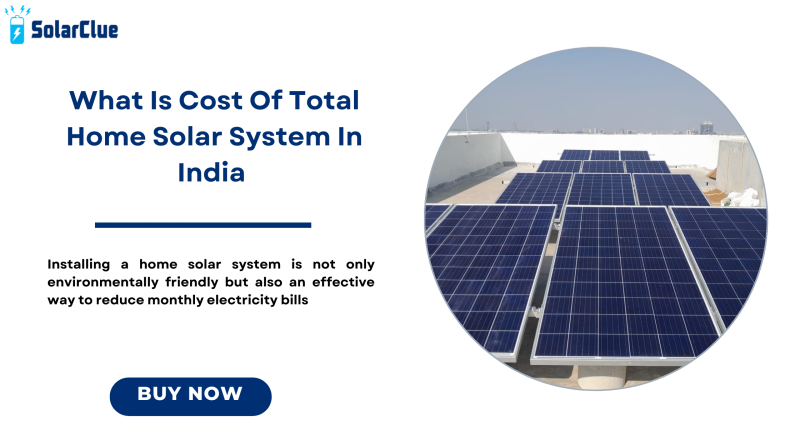What Is Cost Of Total Home Solar System In India
As the world has begun to recognize the importance of sustainable energy, the adoption of solar energy has gained significant momentum in India. Solar energy is one of the most abundant renewable sources available, harnessing the power of sunlight to produce electricity. Installing a home solar system is not only environmentally friendly but also an effective way to reduce monthly electricity bills. This article provides an in-depth overview of the total cost of a home solar system in India.
Table of Contents
Understanding a Home Solar System
A home solar system, also known as a solar power system, consists of solar panels, inverters, batteries, and controllers. Solar panels are the most crucial component as they absorb sunlight and convert it into electricity. The electricity produced is direct current (DC), which is then converted into alternating current (AC) by the inverters for household use. Batteries are also used to store surplus electricity for use during the night or cloudy days. Controllers, on the other hand, protect the entire system from overcharging or any electrical damage.
Determining Factors of Total Cost
The total cost of a home solar system in India is influenced by multiple factors. These include the quality of the components, the size of the installation, the location of the installation, and government policies and subsidies. The system’s output capacity, measured in kilowatts (kW), is the most significant factor that affects cost. Larger the system, greater will be the cost. Also, branded and high-quality components are usually more expensive but they also provide greater efficiency and a longer lifespan.
Average Cost of a Home Solar System in India
The cost of a home solar system in India may vary across different states due to the varying state policies and subsidies. However, on average, the cost of a solar system with capacity range of 3 kW to 10 kW is approximately between INR 90,000 to INR 5,00,000. This includes the cost of the solar panels, inverter, batteries, wiring, mounts, and the installation process. While this may seem like a considerable investment, it’s essential to note that solar systems can help to save on electricity bills in the long run. The exact payback period largely depends on the electricity consumption habits of a household and the amount of sunlight received.
Potential Savings and Payback Period
The savings from a home solar system primarily depend on how much electricity it generates and the cost of electricity it’s offsetting. On average, homeowners can expect to save around 70% to 90% on their electricity bills. The payback period, or the time it takes to recoup the initial cost of the system through electricity savings, can range between 3-7 years, depending on the specifics of the installed system and local electricity rates.
Government Subsidies and Incentives
The Government of India has initiated various programs and policies to promote the use of solar energy. One such initiative is the provision of subsidies and incentives for both residential and commercial solar installations. Subsidies can decrease the cost of a home solar system by 20% to 30%, making the installation more affordable for many households. That said, available subsidies do depend on specific state government policies and the capacity of the installed system.
Conclusion
Solar energy offers an efficient, eco-friendly solution to power generation that simultaneously allows homeowners to reduce their energy expenditures. While the initial cost of installing a home solar system can be substantial, the savings generated on electricity bills over time provide a compelling case for this investment. Government subsidies further ease the financial burden, making solar systems increasingly accessible for the average homeowner in India. As solar technologies continue to advance and become more efficient, it’s safe to assume that solar energy will play an increasingly vital role in India’s energy future.


